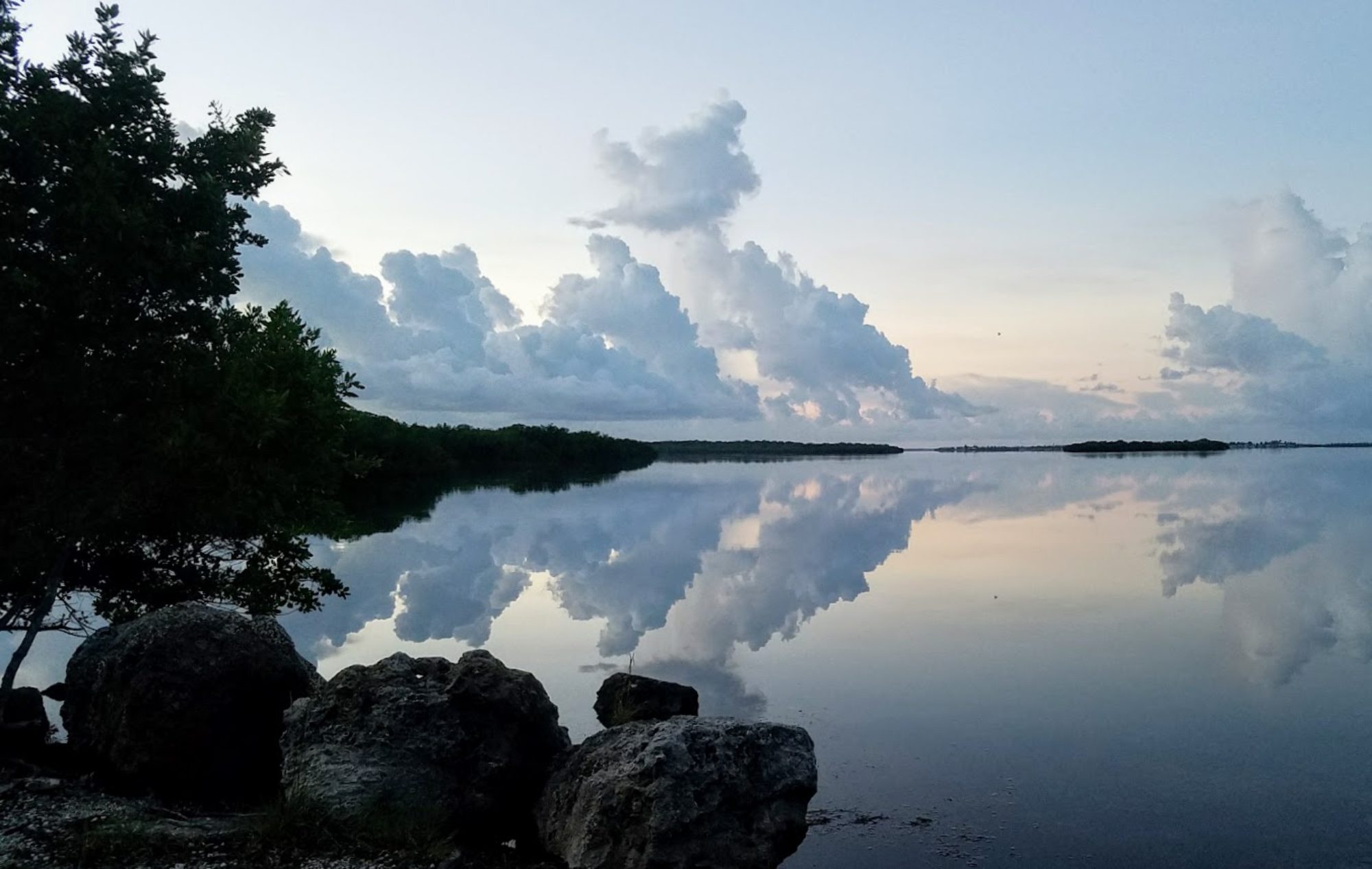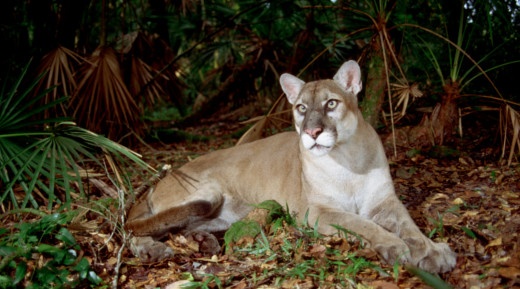Recently Steve and I attended the third in the IFAS series Living with Wildlife. The topic this time was the Florida panther. While reading to prepare for this presentation, I was happy to learn that the Florida Panther, Puma concolor coryi, which once numbered less than 3 dozen, is making a slow recovery.
I didn’t realize that panthers are a subspecies of puma, also known as cougar and mountain lion. They are frequently confused with bobcats and even coyotes. But the panther is about three times the size of a bobcat, and have tails that nearly touch the ground. A full-grown panther will be about thigh-high to a human, while a bobcat will be knee high or less. Bobcats have distinctive white spots on the backs of their ears, while panthers have black on the back of their ears. Coyotes have bushy tails, contrasted with the panther’s slim tail. They are closer in size to a bobcat than a panther, and have a slender face, in contrast to the panther’s squared face.
During the 1990s, the population had been reduced to twenty-five panthers in a single breeding population. The resulting inbreeding caused heart problems and reproductive defects, and required action to prevent the extinction of the Florida panther. In 1995, eight wild female Texas panthers were introduced to the south Florida population. The genetic diversity introduced by these Texans resulted in stronger and longer-lived young. Testing has shown that 23 out of 29 Florida panthers surveyed that were older than a year died between 2002 and 2004, compared with just 22 out of 47 hybrids, according to research published in the journal Science. This exchange of genetic material used to occur naturally, before roads and habitat loss severely limited the range of the Florida panther.
Currently, there are between 120-230 panthers living in the wild (estimates vary depending on modeling used), and their range is expanding. While our panther was once found only south of the Caloosahatchee River, there has been at least one reliable report of a female panther north of the Caloosahatchee, and several panthers killed by cars along the Beachline and I-4. In fact, there has even been a Florida panther sighted in South Georgia.
Panther recovery requires engagement in cooperative conservation with private landowners. Both physical science (understanding the panther) and social science (understanding humans) are used in these efforts. Understanding the panther requires data collection (capture, collar, telemetry, use of remote cameras), data analysis, and adaptive management. Understanding the humans requires data collection (public meetings with all stakeholders), analysis of this data, and adaptive management. This article will focus on the physical science.
To capture a panther for collaring, highly trained dogs are used to tree the cat. An anesthetic dart is used to immobilize the panther, and the team waits for it to fall out of the tree. If the cat doesn’t fall, a team member climbs the tree and the panther is lowered to the ground using ropes.
Once captured, fluids are immediately introduced to reduce the stress of having run from dogs. The panther is vaccinated for rabies and feline leukemia. It is measured for a collar and a physical examination is conducted. This examination may reveal a distinctive cowlick or crooked tail, both indicators of the genetic bottleneck that occurred during the 90s.
Kittens and young adults are not collared.
Once the examination is complete and the collar fitted, all lines are removed and the panther is weighed. This is done last because of the movement involved; it may wake the cat up, and this way it can run off without pulling out an IV. After the animal is weighed, the team keeps the cat in sight until is is up and around.
Panthers have about a 12-year life expectancy. Females breed at about a year and a half, and males breed at about 3 years. Litter size ranges from 1-4, with an average of 2.5 kittens.
Currently, the majority of panther mortality is caused by automobiles. The second most frequent cause of death is young male intraspecies aggression. Adaptive management techniques used to reduce panther mortality by automobile includes underpasses and high fencing used to steer panther traffic to safe areas.
Panthers use pine flatwoods, mixed hardwoods, forested wetlands and wet and dry prairie, with saw palmetto often used for denning. They require a range of about 128,500 acres for males and 48,000 acres for females, large swaths of uninterrupted habitat are necessary for their survival. Continuing development in South Florida means less contiguous habitat and less diverse habitat is available for them.
As the population slowly increases, there will be increased interactions with humans. To date, there have been no negative interactions, although panthers have been observed feeding in residential areas.
The goal for panther recovery is three breeding populations of 240 panthers each. If this goal is achieved, it would be possible to review the panther’s status as endangered.

